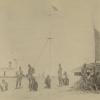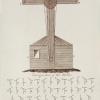The Live Romanian revolution
On December 21, 1989, a carefully orchestrated media event surrounding Romanian leader Nicolae Ceausescu’s speech from the balcony of the Central Committee building showed the entire country the end of his rule.
When rioters disturbed the speech, as media scholar Dana Mustata shows in her recent book The Power of Television, the live television broadcast could not be stopped without showing the people the first overt opposition to his rule. For years prior to that point, the Romanian security service, the Securitate, had orchestrated broadcast performances, but this one seemed to spiral out of control. The broadcast determined the nature of change that came afterwards. When rioters occupied Romanian television the next day, the Live Romanian Revolution unfolded on television.
While the live images of broadcasting showed a change of regime unfolding, the details of who was leaving and who exactly was gaining power remained more obscure. New television personalities like Teodor Brates and Ion Iliescu were introduced as agents of the revolution, although they had previously played important roles in television and the party, respectively. Similarly, despite reports of violent "terrorists" loyal to the Ceaucescu regime, the reports did not clarify precisely who these people were, leading to suspicions that the stories had been planted by the Romanian secret police to cover their own tracks.
 Previous Story
Next Story
Previous Story
Next Story
How to cite this page
Suzanne Lommers, 'The Live Romanian revolution', Inventing Europe, http://www.inventingeurope.eu/story/the-live-romanian-revolution
Sources
- Dana Mustata, “The Power of Television: Including the Historicizing of the Live Romanian Revolution”. Ph.D. diss., Utrecht University, 2011.



















